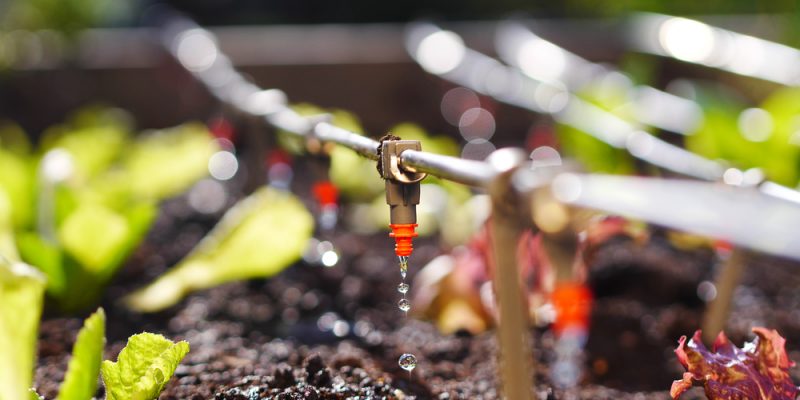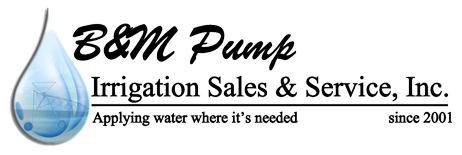
When do Crops Need More Irrigation?
Irrigation plays a crucial role in agriculture, providing crops with the water they need to grow and thrive. However, knowing when crops require more irrigation can be challenging for farmers and growers. Factors such as soil type, weather conditions, crop type, and growth stage all influence the water needs of plants. In this blog post, we’ll explore the various factors that determine when crops need more irrigation and provide seasonal irrigation tips to help farmers optimize water usage and maximize crop yields.
Understanding Crop Water Needs
1. Soil Moisture Levels:
Monitoring soil moisture levels is essential for determining when crops need more irrigation. Different soil types retain water differently, with sandy soils draining quickly and clay soils holding onto moisture for longer periods. Regularly monitoring soil moisture levels using sensors or manual techniques can help farmers gauge when to irrigate.
2. Weather Conditions:
Weather conditions, including temperature, humidity, wind, and precipitation, play a significant role in crop water needs. Hot and dry weather increases evaporation rates and water loss from plants, requiring more frequent irrigation to maintain adequate soil moisture levels. Conversely, cool and humid weather may reduce water loss, allowing crops to go longer between irrigation cycles.
3. Crop Type and Growth Stage:
Different crops have varying water requirements depending on their type and growth stage. For example, young seedlings and flowering plants require more frequent irrigation to establish roots and support growth, while mature plants may need less water once established. Understanding the water needs of specific crops at different growth stages is essential for efficient irrigation management.
Signs That Crops Need More Irrigation
1. Wilting:
Wilting is a common sign that crops need more irrigation. When plants don’t receive enough water, they lose turgor pressure, causing leaves and stems to wilt and droop. Wilting is most noticeable during the hottest part of the day and can indicate that crops are experiencing water stress and require immediate irrigation.
2. Leaf Curling:
Leaf curling is another indicator of water stress in crops. When plants don’t receive enough water, they may curl their leaves to reduce surface area and minimize water loss through transpiration. Curling leaves are a sign that crops are struggling to access sufficient moisture from the soil and may benefit from additional irrigation.
3. Stunted Growth:
Stunted growth is a common consequence of inadequate irrigation. When crops don’t receive enough water, their growth may slow or stop altogether, resulting in smaller plants and reduced yields. Monitoring plant growth and development can help farmers identify when crops need more irrigation to support healthy growth and development.
Seasonal Irrigation Tips
1. Spring:
In the spring, crops are emerging from dormancy and entering their active growth phase. Monitor soil moisture levels closely and irrigate as needed to support early growth and establishment. Pay attention to weather forecasts and adjust irrigation schedules accordingly to account for fluctuating temperatures and rainfall patterns.
2. Summer:
Summer is typically the peak growing season for many crops, but it’s also the time when water demand is highest. Irrigate early in the morning or late in the evening to minimize water loss through evaporation, and consider using mulch to retain soil moisture and reduce weed competition. Increase irrigation frequency during hot and dry spells to prevent water stress and maintain crop health.
3. Fall:
In the fall, crops are reaching maturity and preparing for harvest. Reduce irrigation frequency as temperatures cool and daylight hours shorten, but continue to monitor soil moisture levels to ensure that crops have sufficient water for ripening and final growth stages. Adjust irrigation schedules as needed based on crop requirements and weather conditions.
4. Winter:
In many regions, winter brings cold temperatures and reduced water demand for crops. Reduce or suspend irrigation during the winter months, but continue to monitor soil moisture levels to prevent soil from drying out completely. Be prepared to resume irrigation in early spring as temperatures warm and crops begin to emerge from dormancy.
Summary
Knowing when crops need more irrigation is essential for successful agriculture and maximizing crop yields. Factors such as soil moisture levels, weather conditions, crop type, and growth stage all influence the water needs of plants. By monitoring these factors closely and responding accordingly, farmers can ensure that crops receive the water they need to grow and thrive throughout the growing season. Implementing seasonal irrigation tips can help optimize water usage, minimize water waste, and support healthy crop development, ultimately leading to improved yields and profitability for farmers.
Need an Irrigation System Company in Seminole, TX?
Welcome to B&M Pump Irrigation Sales & Service, Inc.! We are your professional irrigation specialist! Our typical services include complete pump service, water well service, system design, and pivot systems. We deliver personal service and reliability to our customers in Texas, Oklahoma, New Mexico, and Arizona. No matter where you are in the southwest, B&M Pump Irrigation Sales & Service, Inc., is a name you can trust. We strive to educate owners and operators on making pumps and motors last longer and work more efficiently. We sell good quality products at a fair price and stand behind the products we sell. Give us a call today to speak with one of our service experts today!
Categorised in: Irrigation
